The Bad Man of Brimstone

Brief Synopsis
Cast & Crew
J. Walter Ruben
Wallace Beery
Virginia Bruce
Dennis O'keefe
Joseph Calleia
Lewis Stone
Film Details
Technical Specs

Synopsis
On their way to Brimstone, Arizona in 1879, boxer Jeffrey Burton, known as "The Kanarsy Kid," and his trainer, Francis X. "Eightball" Harrigan, are robbed by a masked bandit who, among other things, takes Jeff's pocket watch, which holds a picture of his late mother. When the bandit, "Trigger" Bill, inspects the watch, he recognizes the picture as that of his long-abandoned wife and realizes that Jeff must be his son. Though he doesn't want Jeff to know their relationship, Bill decides to look out for his son in the lawless town of Brimstone. Jeff doesn't respond well to Bill's attempts at protection, and Bill, in turn, finds Jeff's antagonism irritating. When Jeff falls in love with Loretta Douglas, the daughter of Judge Jackson Douglas, however, Bill decides to help him by having Judge Douglas give Jeff $3,000 for his college education, saying that it is an inheritance from his deceased father. Bill confesses the truth to the judge, but makes him promise never to tell Jeff or anyone else in town their real relationship. On the day that Jeff leaves, Bill meets him and Eightball on the road and says goodbye, but only allows his friend, Portuguese Ben, to know how much he really cares for his son, and tells the town's toughest outlaw, Chester "Blackjack" McCreedy, that he has killed Jeff and Eightball for causing the death of one of Blackjack's men. That same day, miners come to town revealing that a large silver vein and been discovered, and Brimstone soon becomes a boom town. Three years later, a mature Jeff returns to town as a lawyer and the new United States Marshal. He soon discovers that during his absence Brimstone has become larger and more lawless, and that Bill and Blackjack run the town. Judge Jackson, who has become weakened with drink and age, has become Blackjack's pawn and bows to his wishes whenever any of Blackjack's cohorts are brought to trial. When Blackjack ruthlessly kills "Eightball" after learning that Bill lied about killing him and Jeff, the judge only sentences Blackjack to $500 or one year in jail after he is convicted of murder, insensing the town's honest citizens. Jeff then takes action to rid Brimstone of Blackjack and his crowd and warns Bill that he can no longer operate as he has in the past. In an ensuing gunbattle, Portuguese Ben is killed, as is the judge, who makes one last attempt at honesty by refusing the cooperate with Blackjack and handing over to Jeff a book that documents all of Blackjack's crimes. When Bill comes to Jeff's aid against Blackjack, Jeff offers him amnesty, but Bill cannot accept because he knows that he must kill Blackjack to protect himself and Jeff. Soon Bill begins his pursuit of Blackjack and Jeff is forced to post Bill as a wanted criminal. After some time, Bill finally tracks down and kills Blackjack. He then returns to Brimstone to see Jeff one last time and discovers that Jeff and Loretta are being married. He is captured while watching the ceremony from outside the church, but convices his captor to allow him to stay just until the end of the ceremony.

Director
J. Walter Ruben
Cast

Wallace Beery

Virginia Bruce

Dennis O'keefe

Joseph Calleia
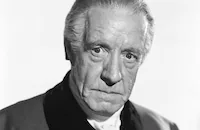
Lewis Stone

Guy Kibbee
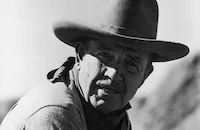
Bruce Cabot

Cliff Edwards

Guinn Williams
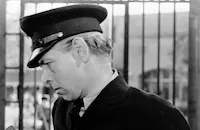
Arthur Hohl
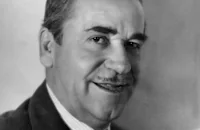
Noah Beery

John Qualen

Robert Barrat

Scotty Becket

John Wray
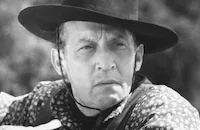
Raymond Hatton
Robert Gleckler
Virginia Brissac
Jules Cowles
John T. Murray
George Rigas
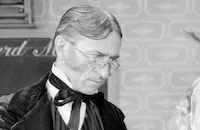
Olin Howland
Frank Hagney

E. Allyn Warren
Stanley Andrews
Spencer Charters
Harry Wilson
Mitchell Lewis
Eddy Waller
Robert Middlemass
Bob Perry
Larry Mcgrath
Wesley Hooper
Sidney Jarvis
Crew
Dr. William Axt
Clyde Devinna
Cedric Gibbons
James Havens
Cyril Hume
Richard Maibaum
Charles O'malley
Harry Rapf
Maurice Rapf
J. Walter Ruben
Douglas Shearer
Lou Strohn
Frank Sullivan
Dolly Tree
Edwin B. Willis

Film Details
Technical Specs

Articles
The Bad Man of Brimstone
Beery's mug, combined with a raspy growl and slow homespun deliveries (the slow deliveries, not Beery's ability to speak lines, were what worried Paramount), did wonders for Beery's bank balance. Another success came in the title role of Viva Villa! (1934), as the Mexican revolutionary whose conquering armies ride to the tune of La Cucaracha. He was amenable to saddling up again for The Bad Man of Brimstone (1937). With a title like that, you expect a Poverty Row quickie. It's a formula Western, sheer hokum, but MGM being MGM, they loaded the cast with talent and trooped off to the Grand Canyon to film it. Beery plays Trigger Bill, an occasionally deadly but mostly benevolent rapscallion as long as he gets his cut. During filming, Beery killed a five-foot rattlesnake that had wound itself around the leg of a tripod. On the other hand, he also accidentally shot himself in the foot with a blank cartridge and was sidelined for two weeks. So much for trigger fingers!
We meet Trigger Bill as he holds up a stagecoach carrying an Easterner he doesn't realize until later is his son. You'd call Dennis O'Keefe's Jeffrey his long-lost son, except that Trigger Bill ran out on the baby boy and his mother (now deceased) in Brooklyn years ago. So the film rides the old melodramatic device of having Trigger Bill do what he can to help the young man without letting on that they're father and son. Son Jeffrey is a.k.a. The Canarsie Kid, a boxer traveling with his manager, Guy Kibbee's figure of rotund affability. The heavies are three brothers named McCreedy, the middle one played by Cliff Edwards of Ukulele Ike pop music fame. The really bad one, Blackjack, is Bruce Cabot, who only a few years prior snatched Fay Wray from the lovelorn clutches of King Kong (1933). Cabot enjoyed a long career. He lost out to John Wayne in Wayne's breakthrough film, Stagecoach (1939). But he and Wayne became friends and Wayne often got Cabot work in Westerns.
Trigger Bill straddles a sometimes shaky line between good and bad, but winds up on the right side of the law, sort of, when a silver rush transforms Brimstone. Bill talks his son into giving up the law enforcer's job the young man just took, and sends him off to law school with fistfuls of silver. This puts Jeffrey's budding romance with Virginia Bruce on hold. She's the daughter of the local judge (Lewis Stone, the judge and father whose patience was so often tested by son Mickey Rooney in the popular Andy Hardy movies). She projects a soft sweetness as opposed to so much of the aggressive glamour so prevalent in the period. With her pale eyes and blonde hair, she was born to be backlit, and is a lot, with tender, loving care by J. Walter Ruben, who wrote and directed the film, upon the completion of which they married. All that and the veteran Maltese character actor, Joseph Calleia, best remembered as Orson Welles' disillusioned police sidekick in Touch of Evil (1958). Altogether, this supporting cast appeared in hundreds of films.
O'Keefe enjoyed an extensive career too. He had a way of lightening the texture of whatever he appeared in, even crime melodramas. Here, he has a wonderful moment, as he's reluctantly leaving the judge's white picket fenced home. After the requisite bumpy start, things have gone well between him and Bruce in the first scene of their rapprochement. As he leaves, he breaks into a buoyant little dance step as soon as the gate closes behind him. It's just seconds long, but tells us all we need to know better than any script could. In the climactic shootout he has to make a quick choice between the man he doesn't know is his father, and a passel of locals trying to gun him down. Unhesitatingly, he stands alongside his clandestine dad. Among the evil locals (wretched shots, every one of them) is Noah Beery, Wallace's older brother by a few years. The last time they had appeared together was in 1916. They reteamed three more times - in Salute to the Marines (1943), Barbary Coast Gent (1944) and This Man's Navy (1945).
By Jay Carr

The Bad Man of Brimstone
Quotes
Trivia
Notes
According to a Hollywood Reporter news item, James Stewart was originally set to star in the film. News items in Los Angeles newspapers note that Wallace Beery accidentally shot himself in the leg with a blank from his gun on September 13, 1937, during one of the film's action sequences. He was then taken to Cedars of Lebanon Hospital and, according to the news reports, was unable to work for about two weeks. An unidentified review of the film dated February 1938, contained in the AMPAS Library file on the film, mentioned that the character of "Trigger" Bill was a composite of actual Old West outlaws James H. "Dog" Kelley, Blinky Jones and Dr. John W. "Doc" Holliday.
Large segments of the film were shot on location in Zion National Park and Kanab, Utah. A January 17, 1938 news item in Hollywood Reporter noted that the success of this picture was signaling a change for M-G-M to produce more "outdoor" pictures. This was the first major film role for actor Dennis O'Keefe, whose real name was Edward Vance Flanagan and who had previously acted in numerous bit parts at M-G-M and other studios under the name Edward James Flanagan, or Bud Flanagan. According to a news item in Motion Picture Herald, Flanagan was henceforth going to be known as "Larry Doyle," but the actor apparently never used the name Doyle in a film, and Bad Man of Brimstone marked the first time he used the name "Dennis O'Keefe." Modern sources indicate that he was brought to the attention of M-G-M executives by Clark Gable, who noticed the young actor in a bit part in his 1937 picture, Saratoga. O'Keefe starred in several light comedy films for M-G-M before going to other studios. Wallace and Noah Beery were brothers. According to modern sources, this film marked the first time they appeared together since 1916.















